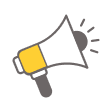
- Services
- Solutions
- Stacks
- About
- Resources
- Store
The Product Life Cycle: From Cold Lead to Customer Retention

The Product Life Cycle: From Cold Lead to Customer Retention
 Rob StadnickApr 10, 2023
Rob StadnickApr 10, 2023The Product Life Cycle: From Cold Lead to Customer Retention 🚀
In today's competitive market, understanding and optimizing the product life cycle is essential for businesses aiming to enhance efficiency, improve customer satisfaction, and drive growth. At Launchpoint, we focus on identifying and eliminating business lag to streamline each stage of the customer journey. Business lag refers to the time delays between crucial business activities that can hinder operational efficiency and performance.
1. Cold Lead to Cash Stage 💲
The first stage of the product life cycle focuses on transforming a cold lead into a paying customer. This stage involves several processes and systems designed to generate leads, nurture them, and ultimately convert them into sales. By addressing business lag in this stage, Launchpoint ensures that each step is as efficient and effective as possible.
Lead Generation
- Digital Marketing (SEO, PPC): Attract potential customers through search engine optimization and pay-per-click advertising.
- Content Marketing: Create valuable content to engage and inform potential customers.
- Social Media Marketing: Use social platforms to reach and interact with your audience.
- Webinars and Events: Host events to showcase your expertise and attract leads.
- Referral Programs: Encourage existing customers to refer new leads.
Lead Nurturing
- Email Campaigns: Send targeted emails to keep leads engaged.
- Personalized Content Delivery: Offer customized content based on lead preferences.
- Retargeting Ads: Use ads to re-engage visitors who have shown interest.
- CRM Automation: Automate follow-ups and track interactions with leads.
- Lead Scoring: Rank leads based on their likelihood to convert.
Intake Forms
- Automated Data Capture and Entry Systems: Efficiently collect and manage lead information.
- Qualify Leads: Evaluate lead potential through automated systems.
Sales CRM
- CRM Automation Features: Automate tasks such as follow-ups and reminders.
- Lead Scoring and Prioritization: Focus efforts on high-potential leads.
Marketing Automation
- AI-Driven Marketing Automation Platforms: Utilize AI to optimize marketing efforts.
- Personalized Email Marketing: Send tailored messages to nurture leads.
E-Signing
- E-Signature Platforms: Facilitate quick and secure contract signing with real-time tracking and reminders.
Invoicing and Payment Processes
- Integrated Invoicing and Payment Systems: Streamline the billing process.
- Automated Reminders: Ensure timely payments with automated notifications.
Order Processing
- Order Management Systems: Efficiently manage orders from placement to fulfillment.
- Payment Gateways: Securely process payments.
- Fraud Detection Tools: Protect transactions from fraudulent activities.
- ERP Systems Integration: Integrate with enterprise resource planning systems for seamless operations.
2. Product/Service Delivery Stage 🎢
Once a sale is made, the next stage involves developing, producing, and delivering the product or service to the customer. Reducing business lag during this stage ensures timely and efficient delivery, which is crucial for maintaining customer satisfaction.
Product/Service Development
- Development Roadmapping: Plan the development process.
- Agile Development Tools: Use agile methodologies for iterative progress.
- Prototyping and Testing: Create and test prototypes to ensure quality.
- Version Control Systems: Manage changes and updates efficiently.
Production/Service Provisioning
- Production/Service Planning Software: Plan and schedule production or service delivery.
- Quality Control Systems: Ensure the highest standards are met.
- Resource Management: Allocate resources effectively.
- Just-in-Time Production/Service Delivery: Minimize waste by aligning production with demand.
Distribution Management
- Order Management Systems within CRMs: Track and manage orders.
- Resource and Inventory Management Systems: Monitor and control inventory levels.
- Real-Time Tracking: Provide transparency in the distribution process.
Vendor and Resource Management
- Vendor Relationship Management Systems: Maintain strong relationships with suppliers.
- Automated Procurement Processes: Streamline purchasing and resource management.
Logistics and Fulfillment (if applicable)
- Fulfillment Management Systems: Oversee the fulfillment process.
- Route/Delivery Optimization Tools: Ensure efficient delivery routes.
- Tracking and Notification Systems: Keep customers informed about their order status.
3. Customer Support and Retention Stage 🏖
After the product or service is delivered, ongoing support and engagement are crucial to retaining customers and fostering loyalty. Launchpoint’s approach focuses on minimizing business lag in this stage to ensure quick and effective customer support and retention.
Implementation/Onboarding
- Onboarding Programs: Guide customers through initial setup.
- Implementation Teams: Provide hands-on support.
- Customer Training Sessions: Educate customers on using the product/service.
- User Guides and Tutorials: Offer detailed instructions.
Post-Sale Engagement
- Customer Success Management: Ensure customers achieve their desired outcomes.
- Feedback Collection Tools: Gather customer insights for continuous improvement.
- Loyalty Programs: Reward repeat customers.
- Upsell/Cross-Sell Campaigns: Introduce additional products/services.
Maintenance and Upgrades
- Scheduled Maintenance Alerts: Notify customers about planned maintenance.
- Upgrade Notifications: Inform customers of new features or versions.
- Subscription Renewal Systems: Manage renewals efficiently.
- Continuous Improvement Programs: Regularly enhance product/service offerings.
Returns and Issue Resolution (if applicable)
- Return/Issue Authorization Systems: Handle returns and issues smoothly.
- Reverse Logistics: Manage the return process for physical products.
- Refund/Issue Processing: Ensure quick resolution.
- Customer Communication Tools: Maintain open lines of communication.
Customer Retention
- Customer Feedback Analysis: Use feedback to improve.
- Net Promoter Score (NPS) Tracking: Measure customer loyalty.
- Engagement Metrics Monitoring: Track customer interactions.
- Personalized Retention Campaigns: Tailor campaigns to retain customers.
Support Systems
- Advanced Ticketing Systems: Manage support requests efficiently.
- AI Support Tools: Utilize chatbots and virtual assistants.
- Comprehensive Knowledge Bases: Provide easily accessible information.
- User-Friendly Documentation Platforms: Offer clear and helpful documentation.
End-of-Life Product/Service Management
- Product/Service Sunset Policies: Plan for product/service end-of-life.
- Data Migration Assistance: Help customers transition data.
- Alternative Recommendations: Suggest suitable replacements.
- Customer Communication Plans: Keep customers informed throughout the process.
Conclusion
By understanding and optimizing each stage of the product life cycle, businesses can enhance efficiency, improve customer satisfaction, and achieve sustainable growth. This comprehensive framework ensures that any business, whether it deals in physical goods or digital products, can identify relevant processes and systems to streamline operations and manage business lag effectively. At Launchpoint, we are dedicated to helping businesses thrive by providing the tools and expertise needed to excel at every stage of the product life cycle.
Our automation audit services are designed to identify and eliminate business lag through strategic automations, ensuring your business operates at peak efficiency. Contact us today to learn more about how our solutions can help your business succeed.

 Talk to Launchpoint Expert
Talk to Launchpoint Expert